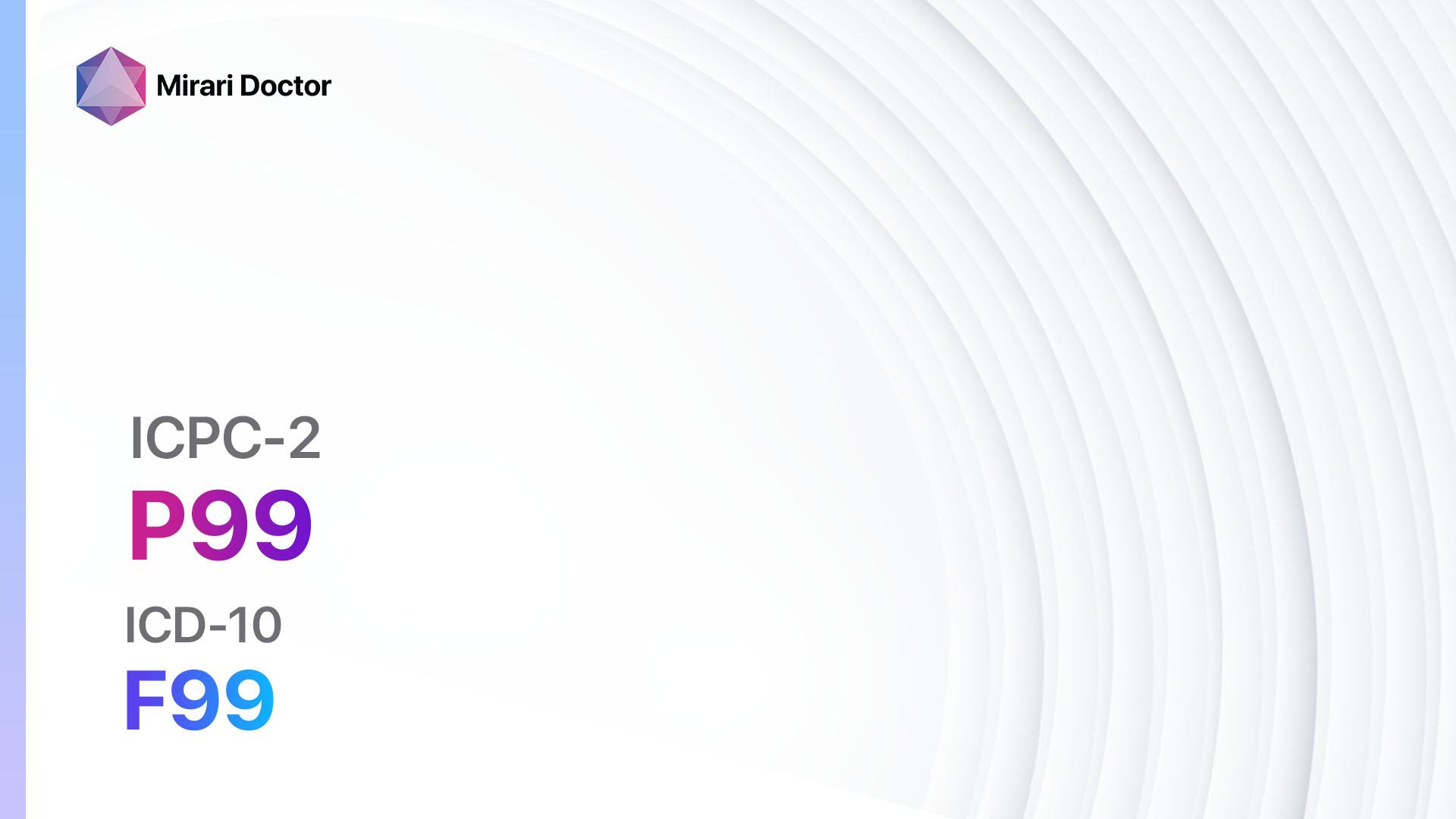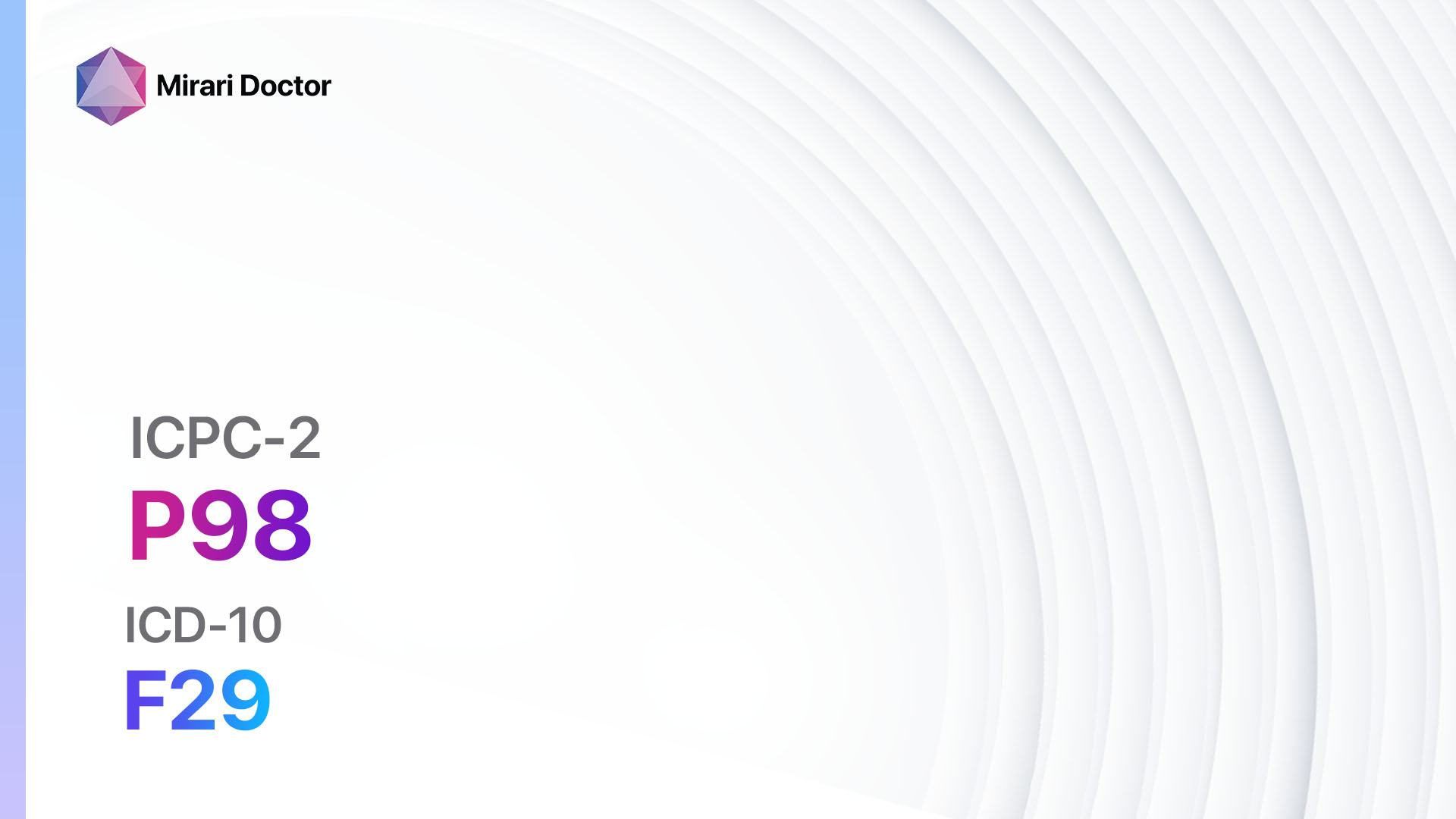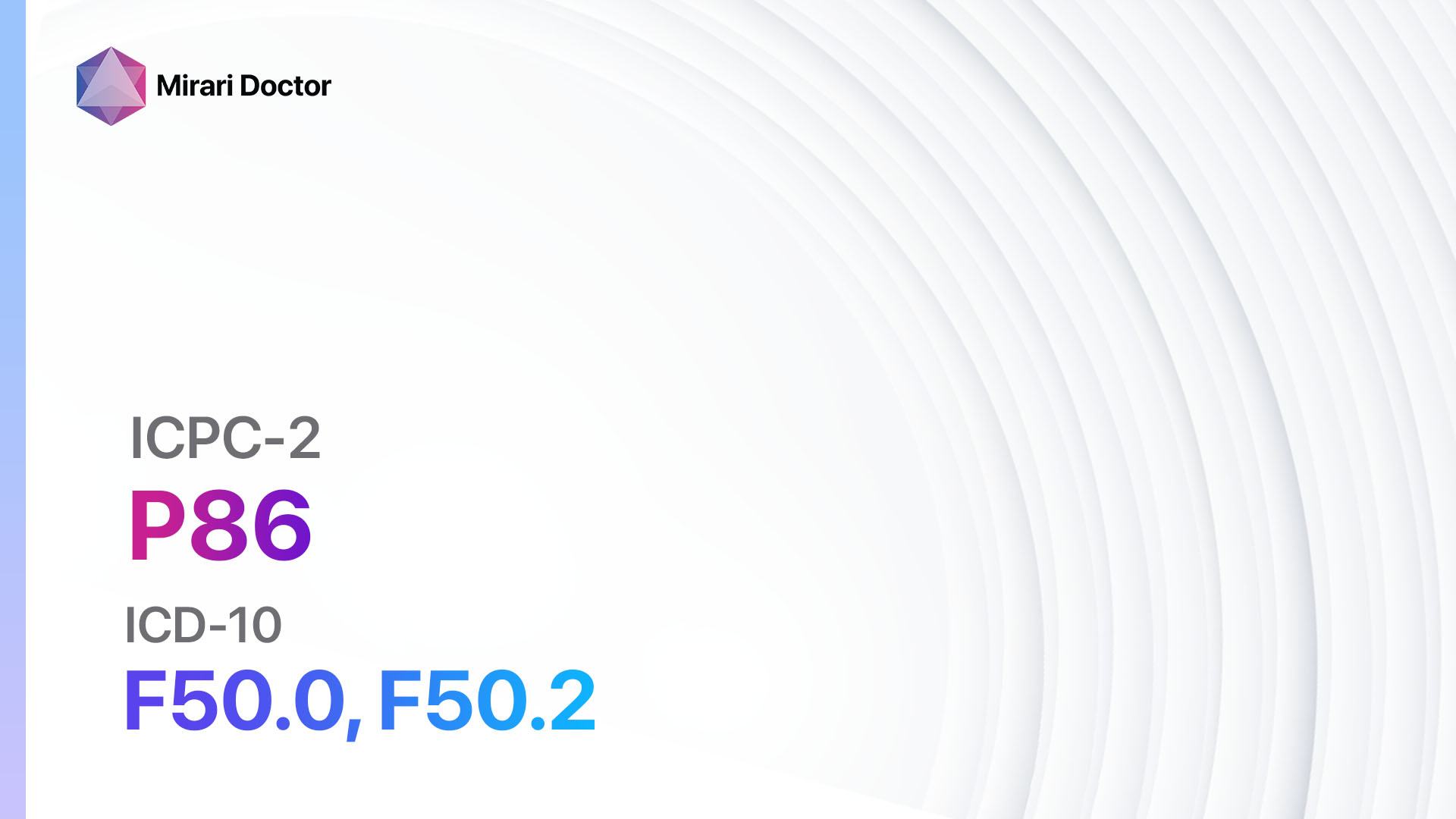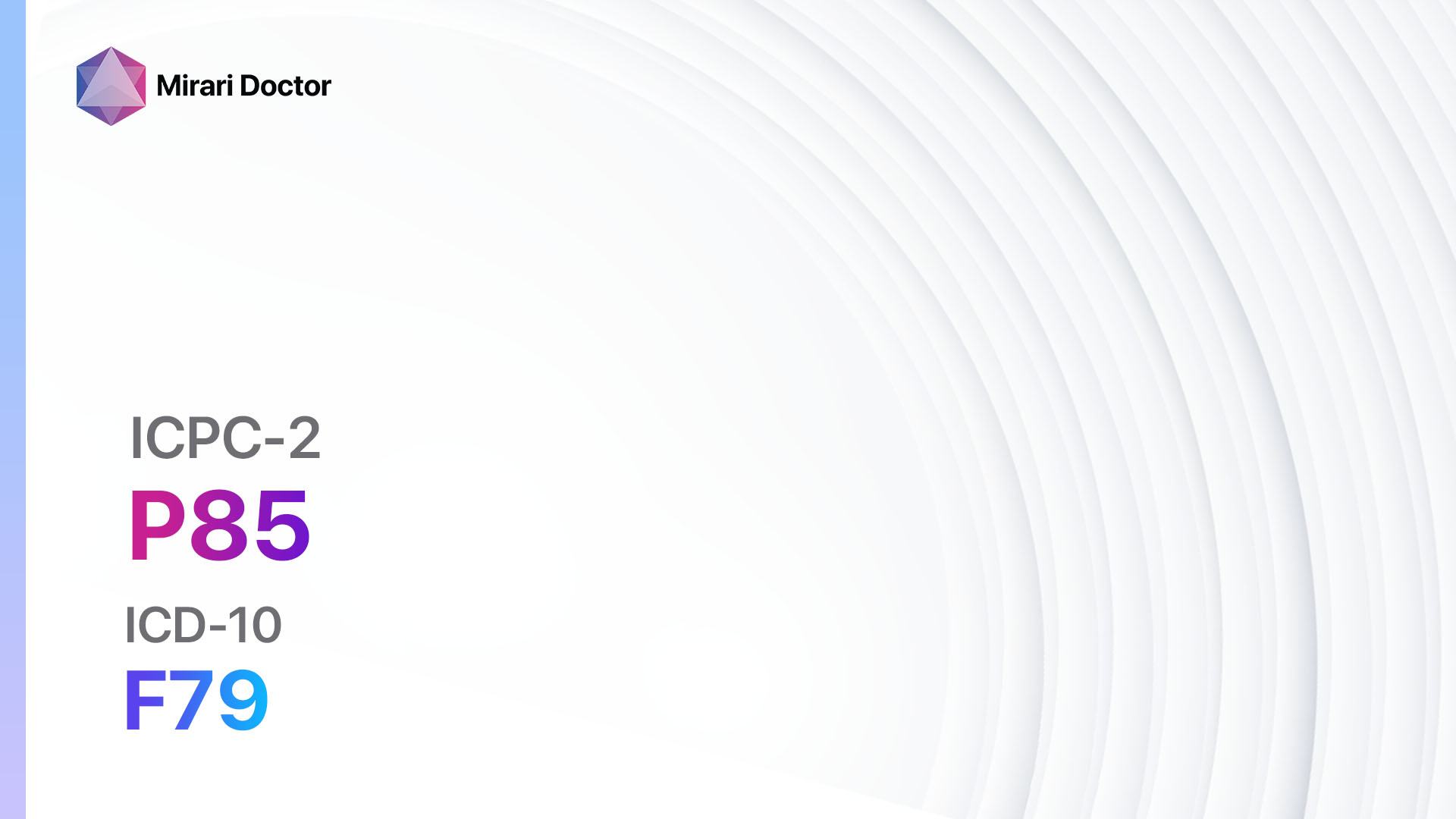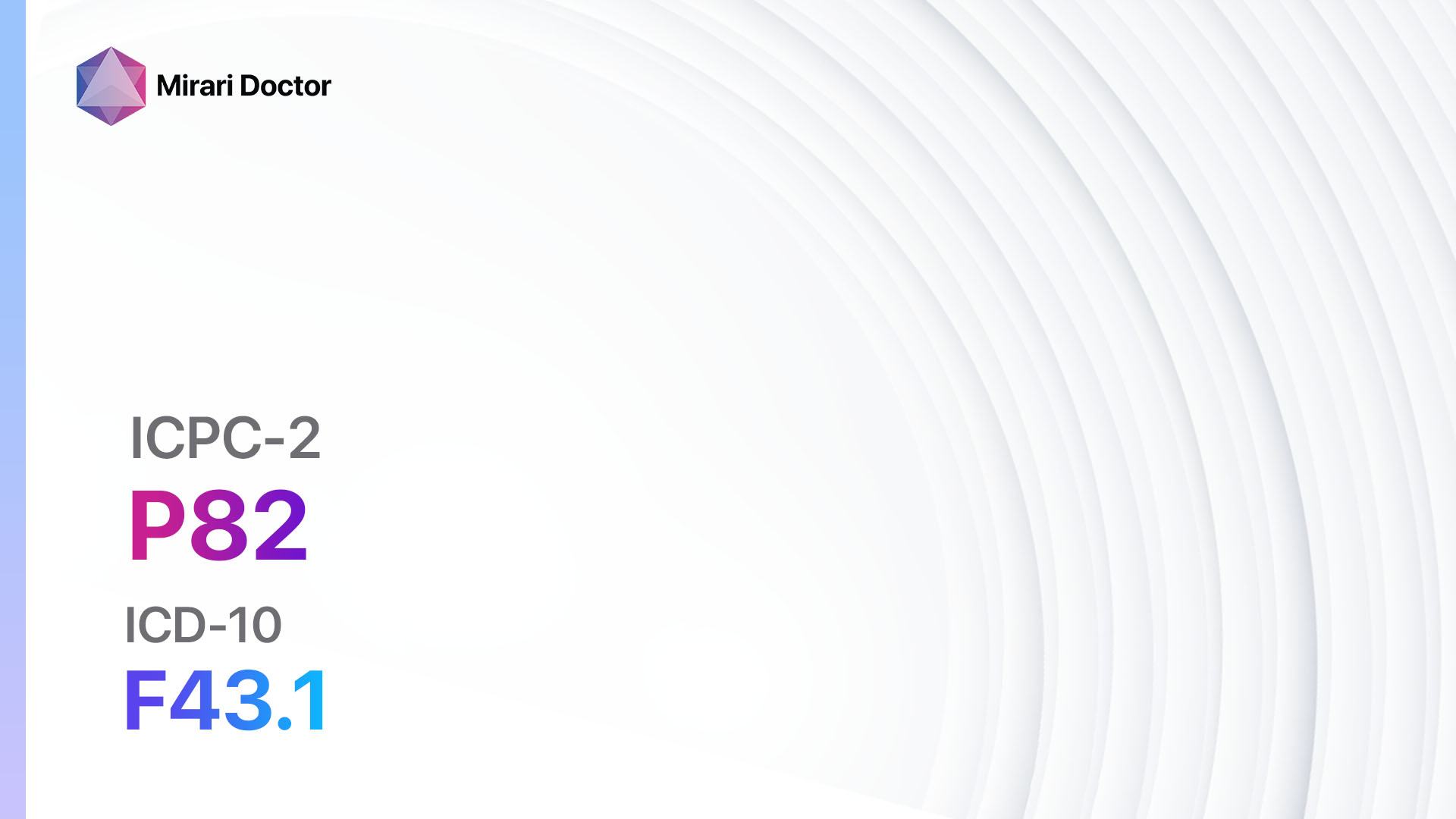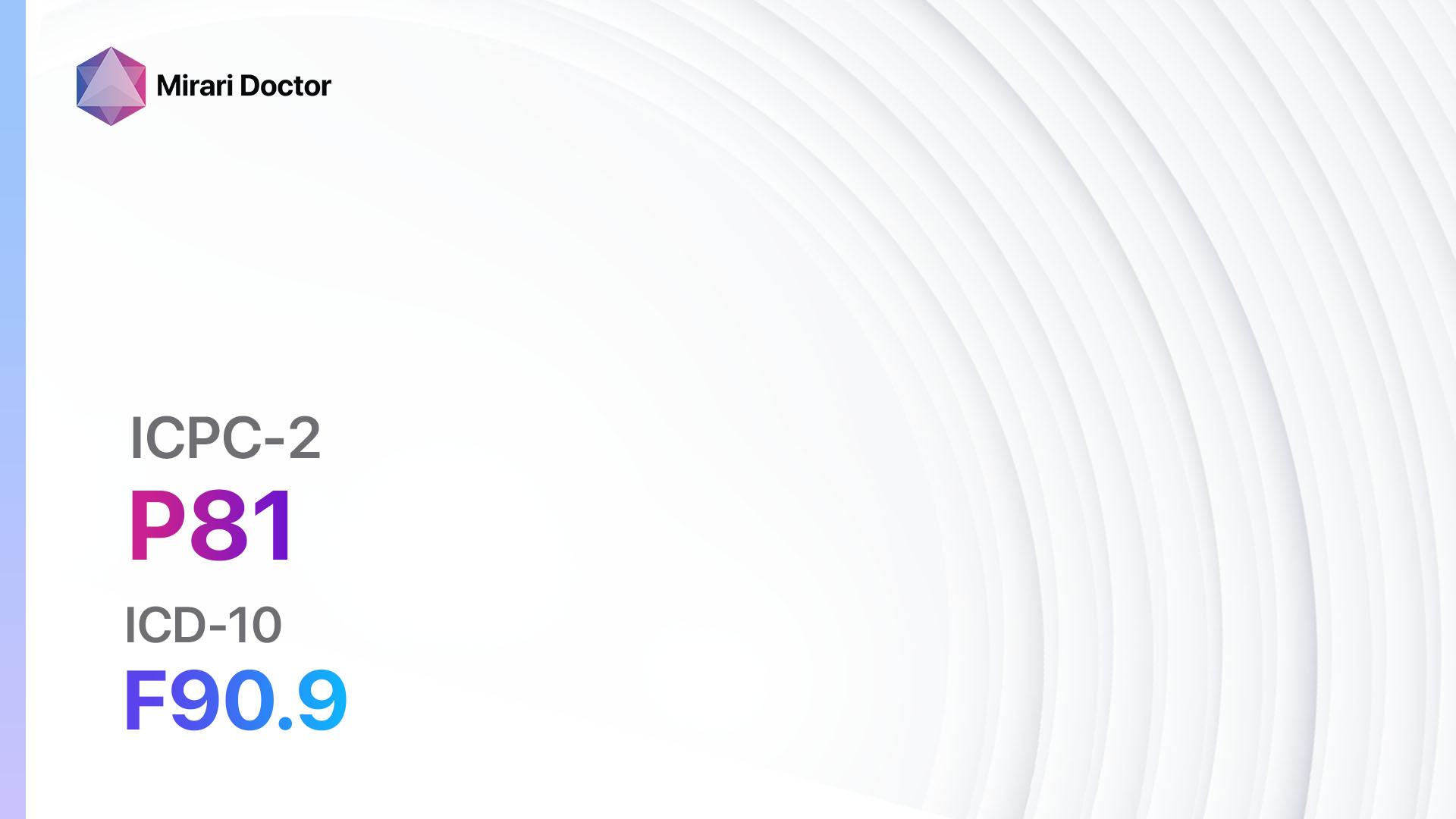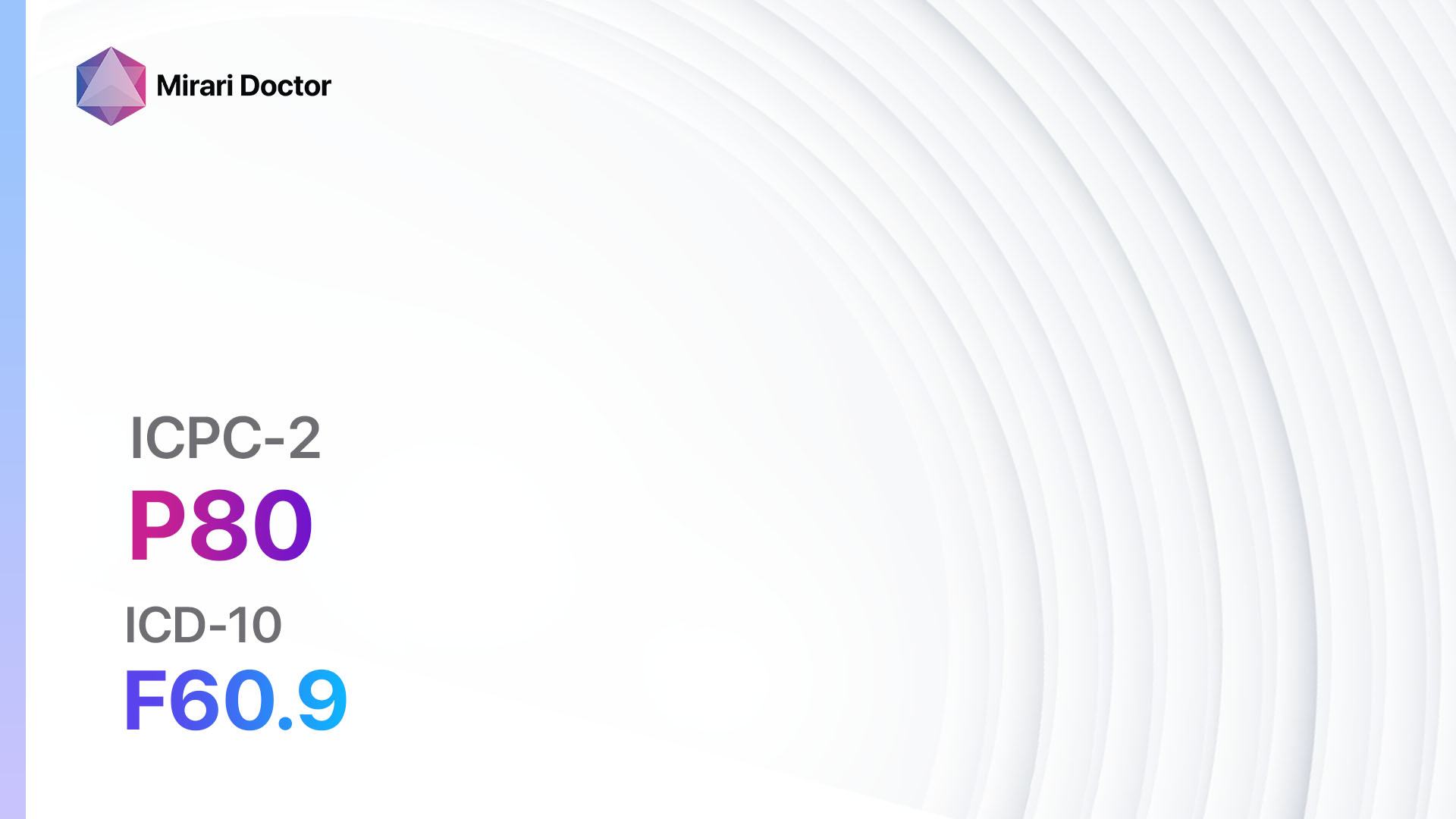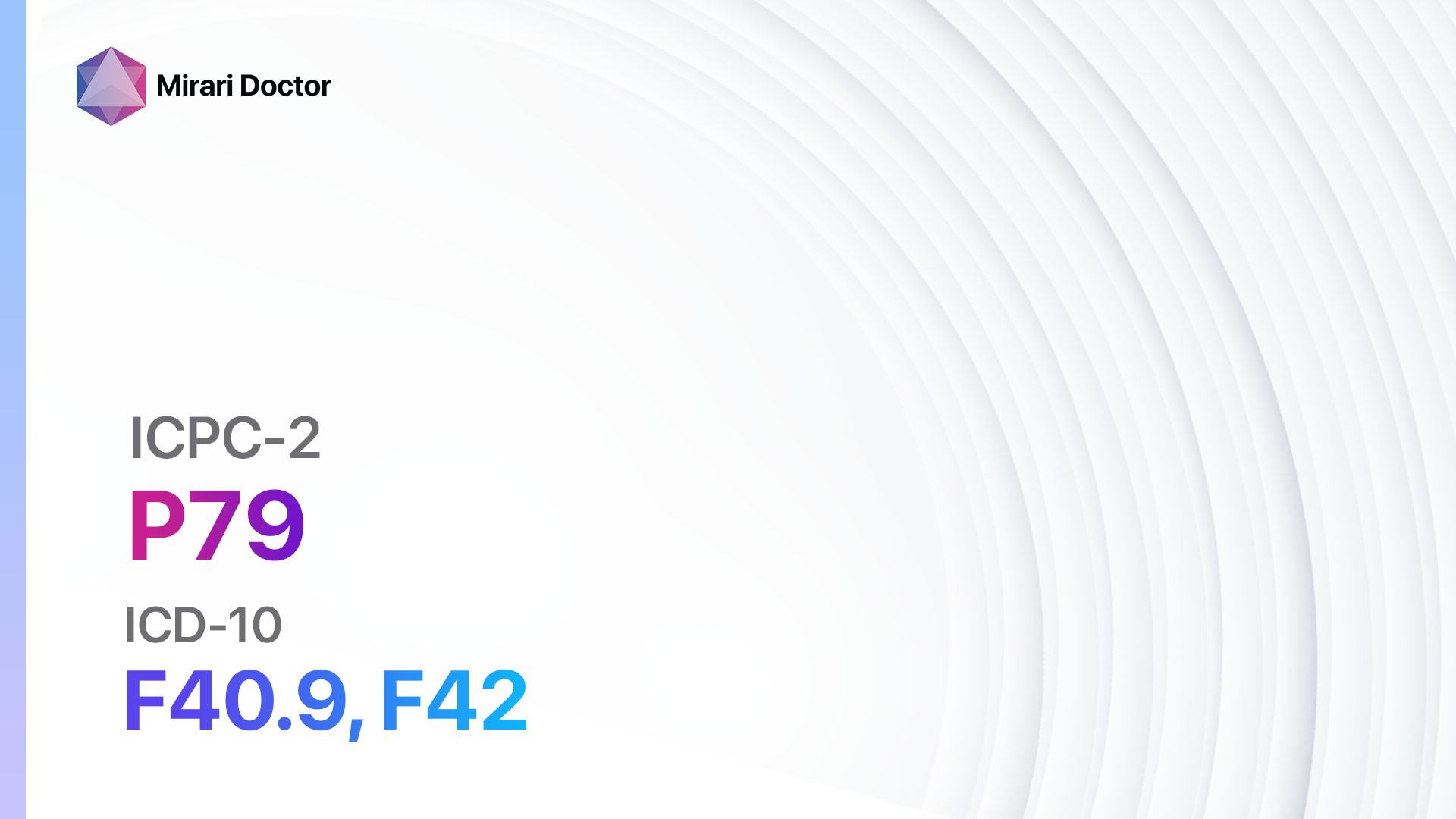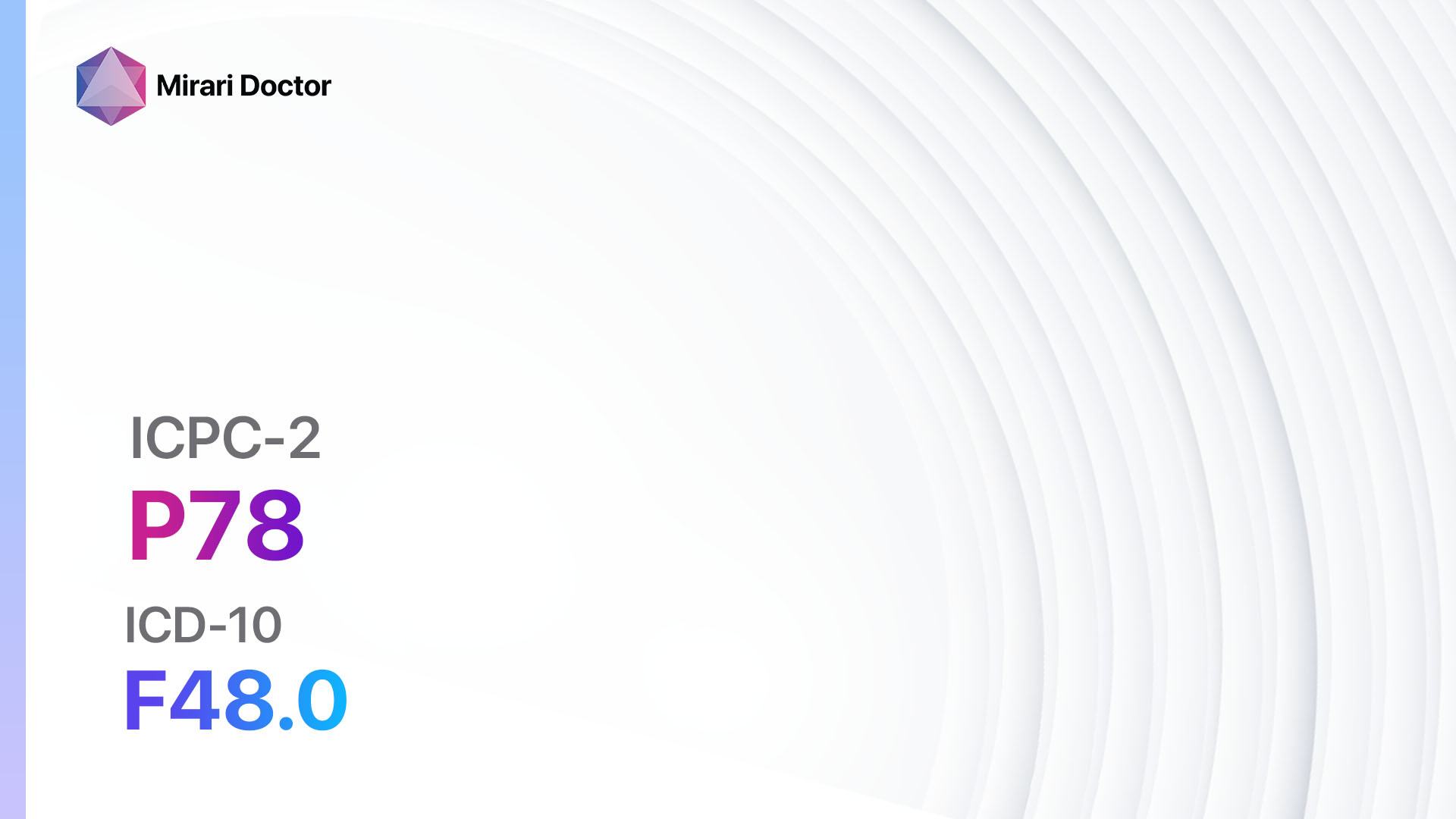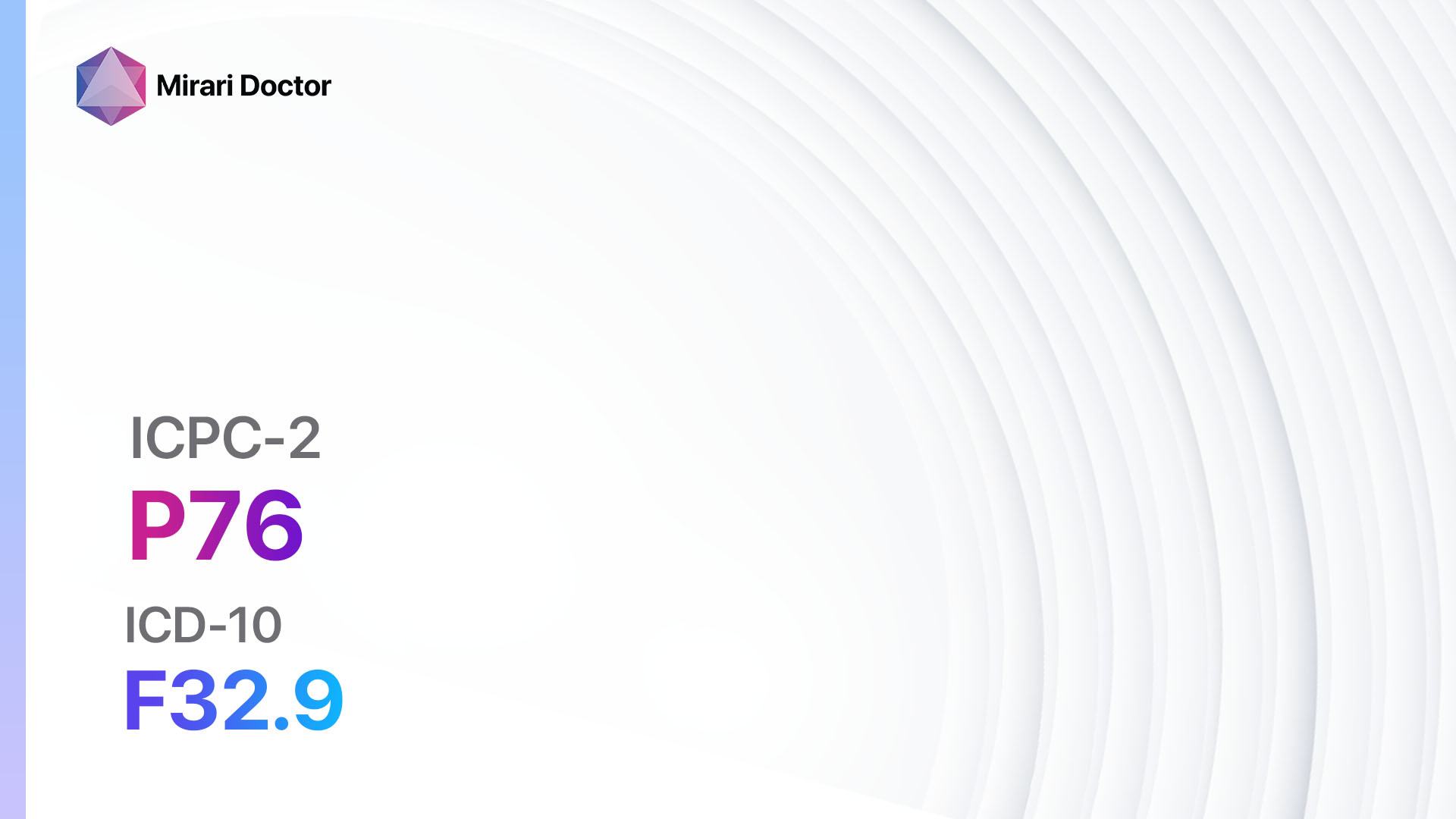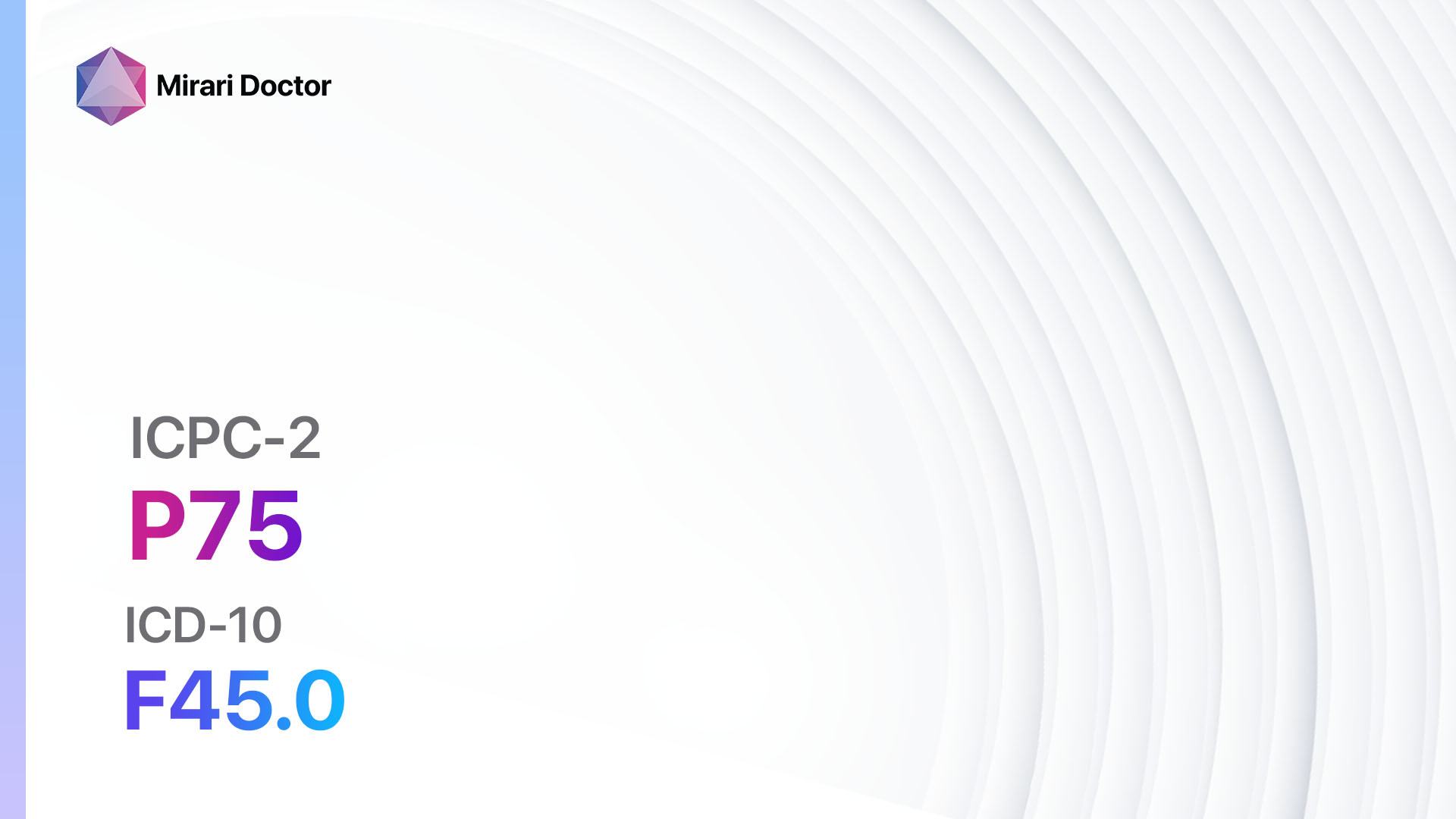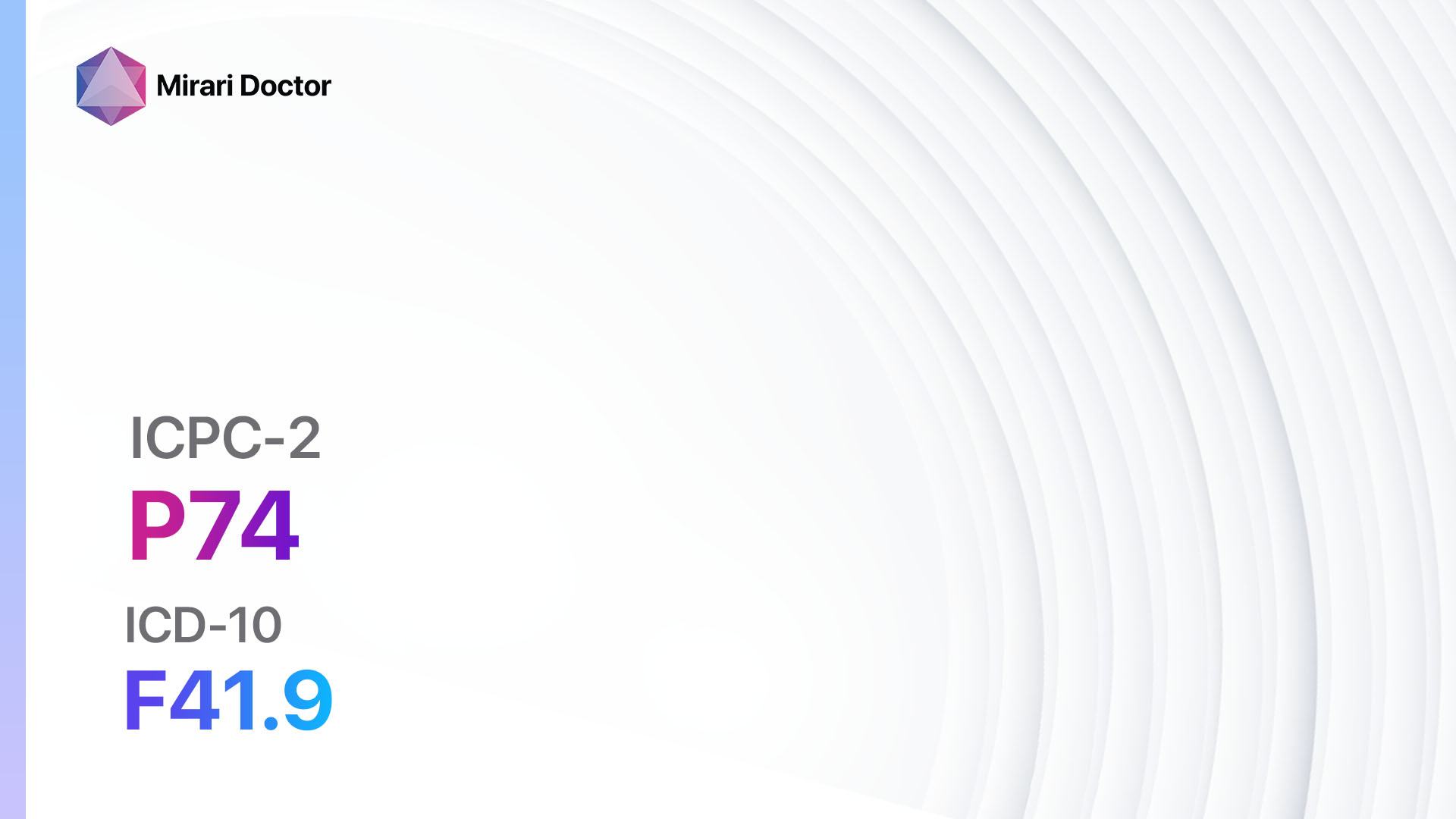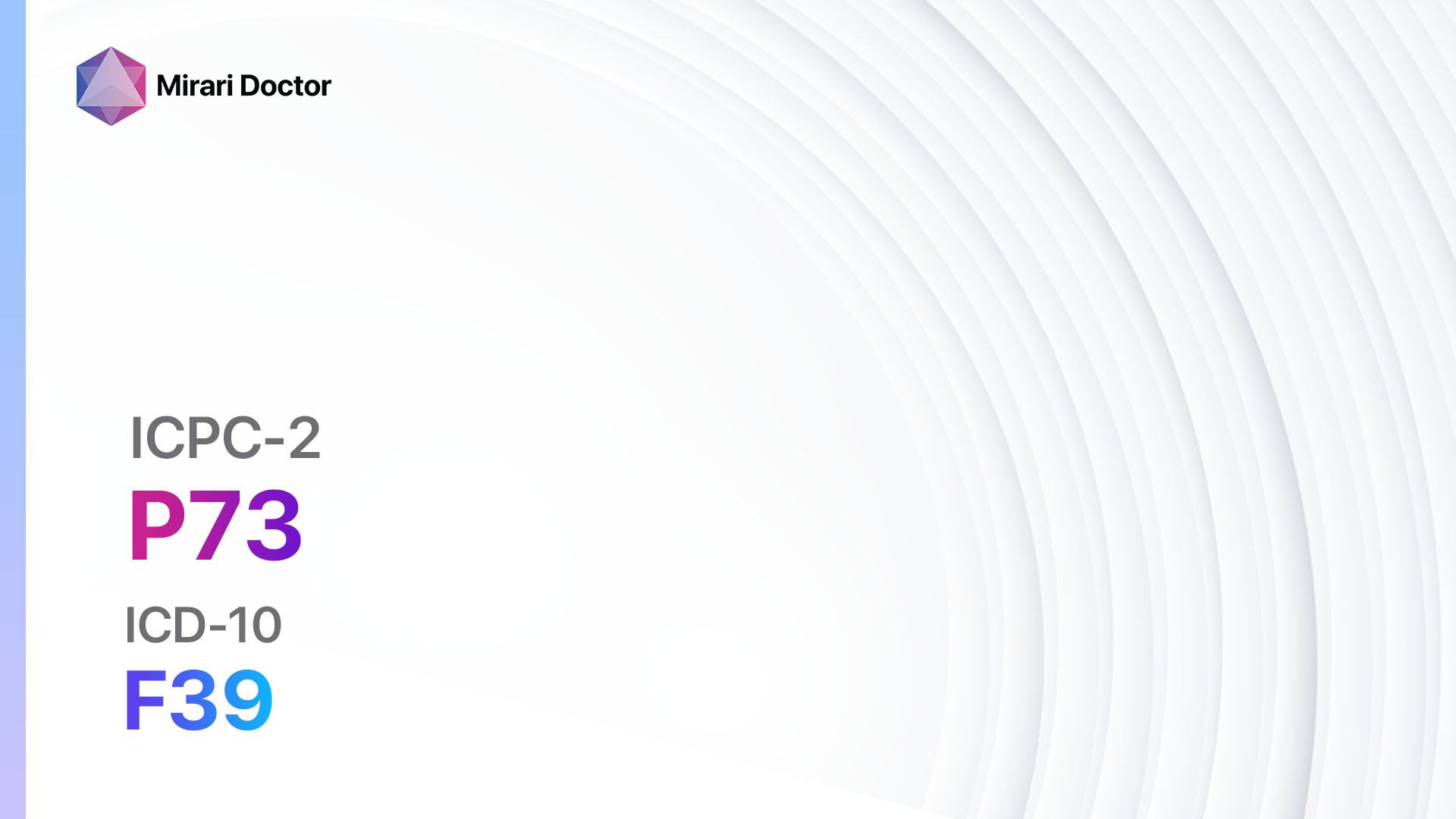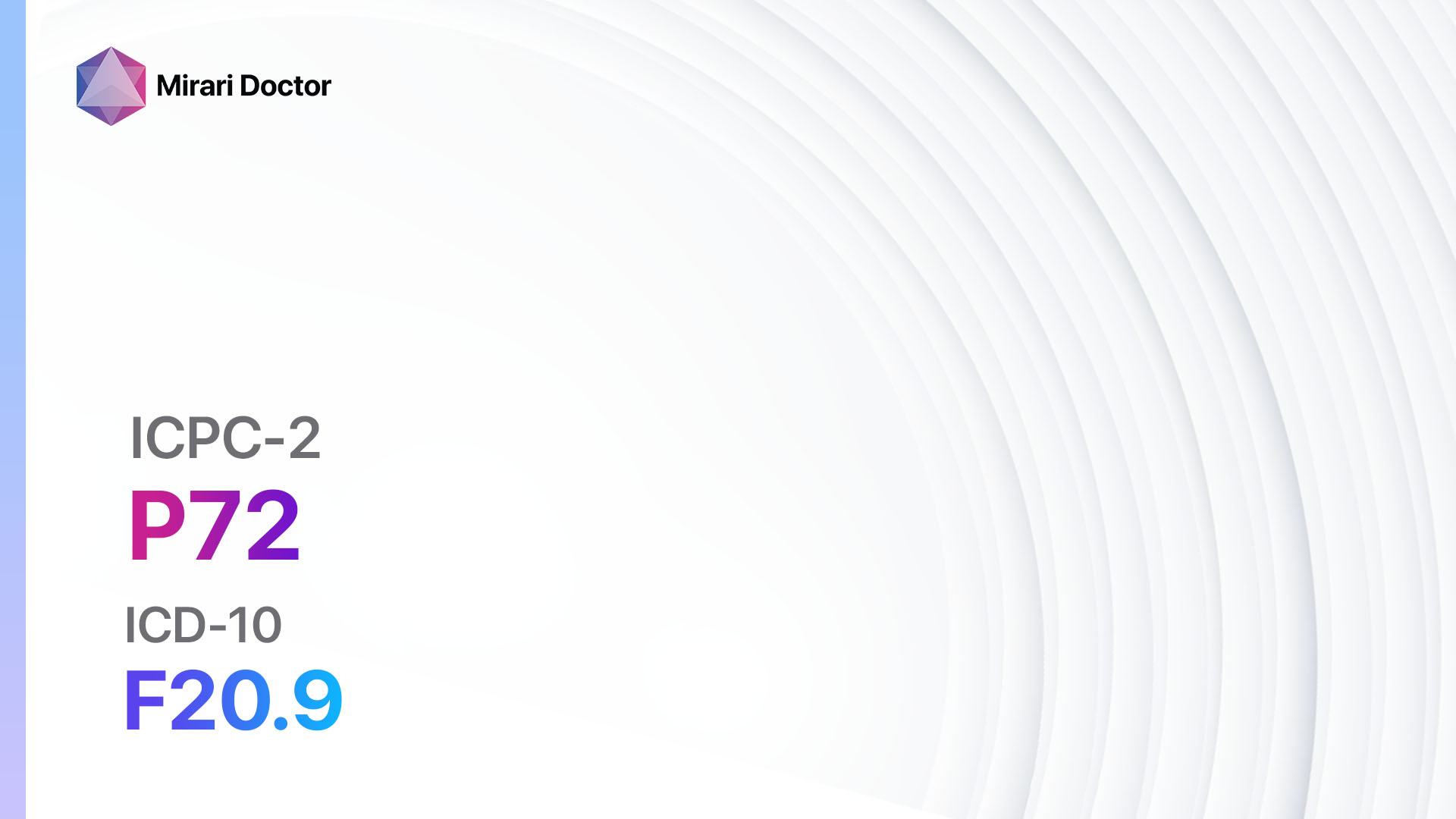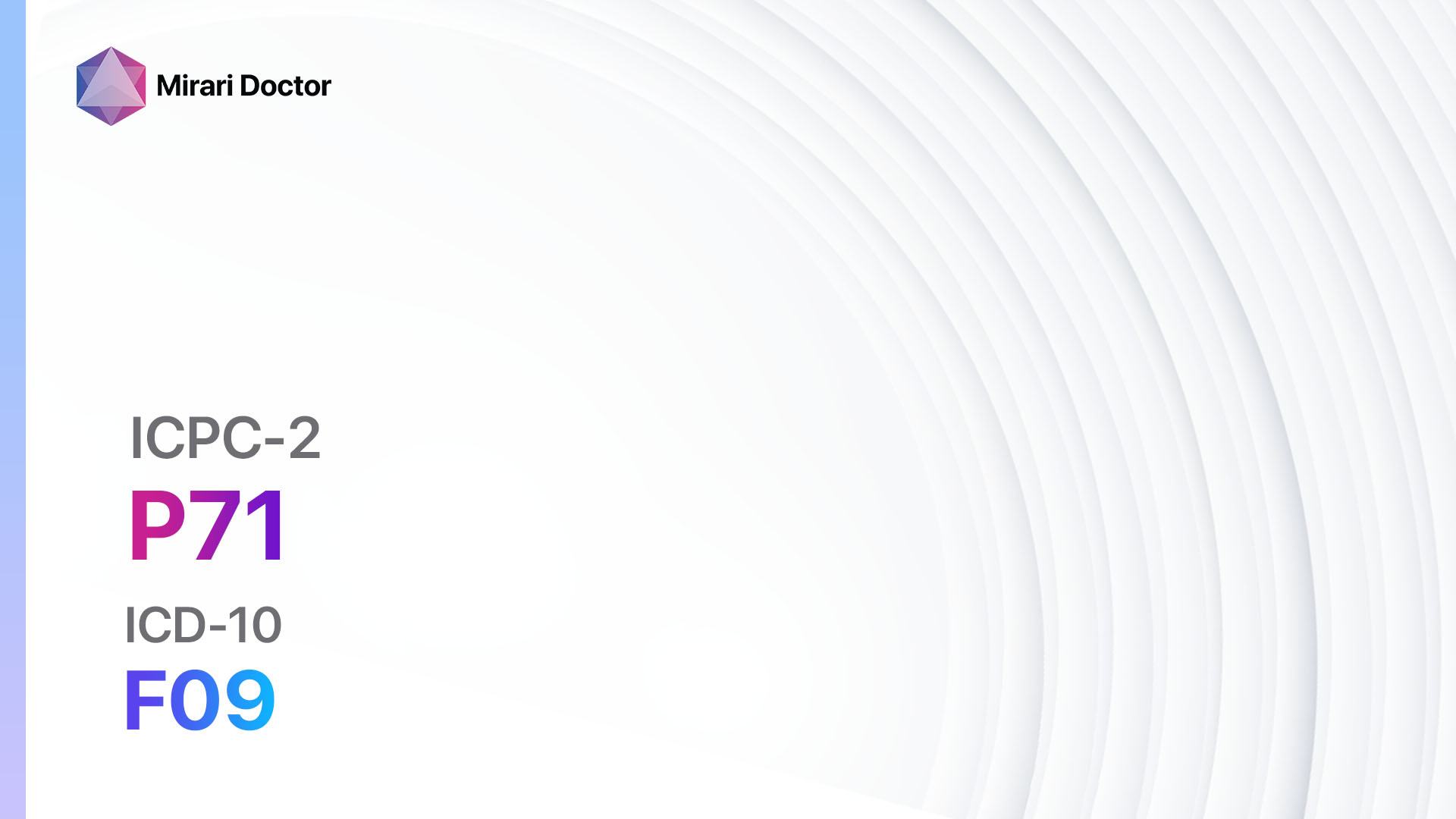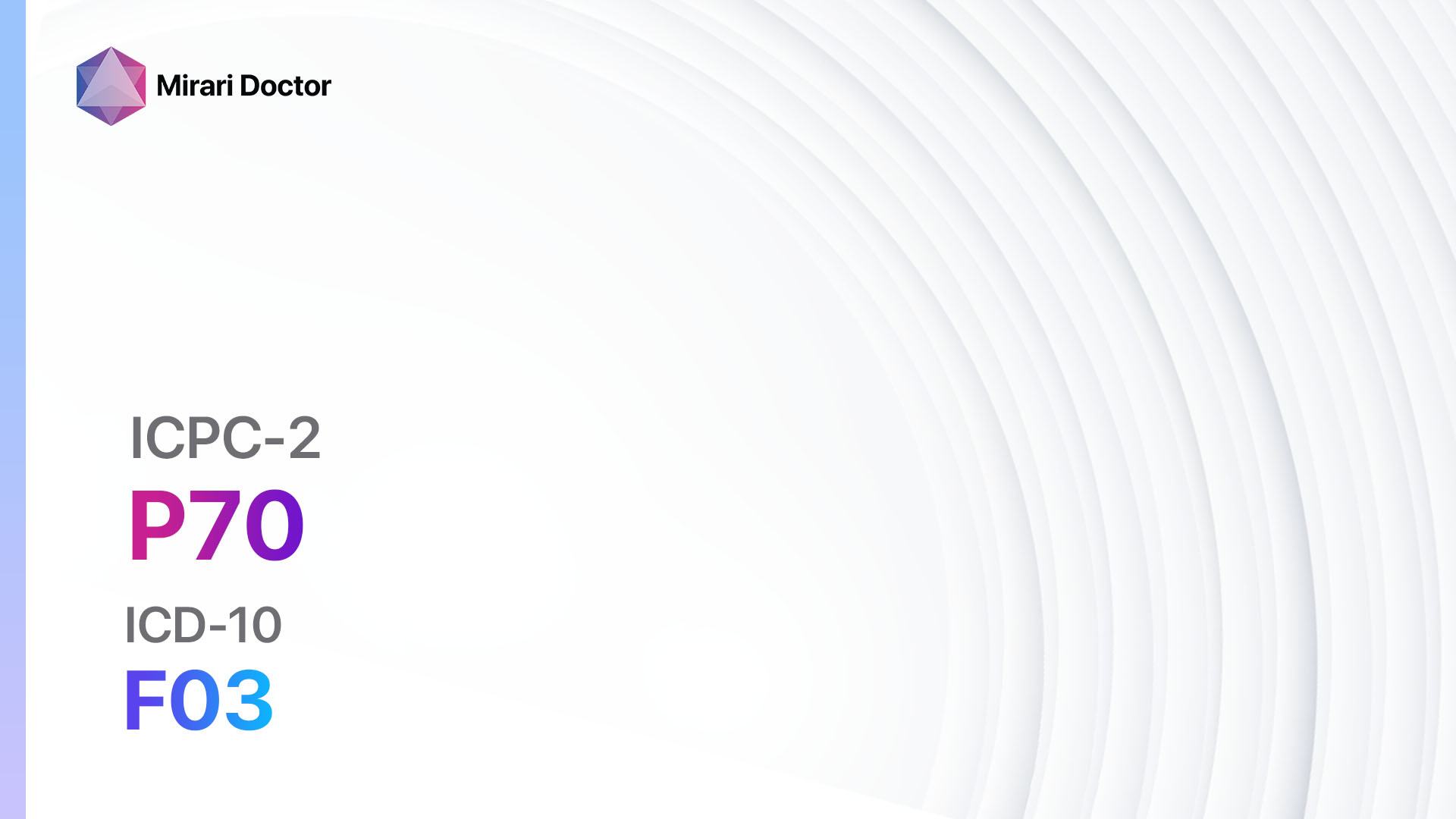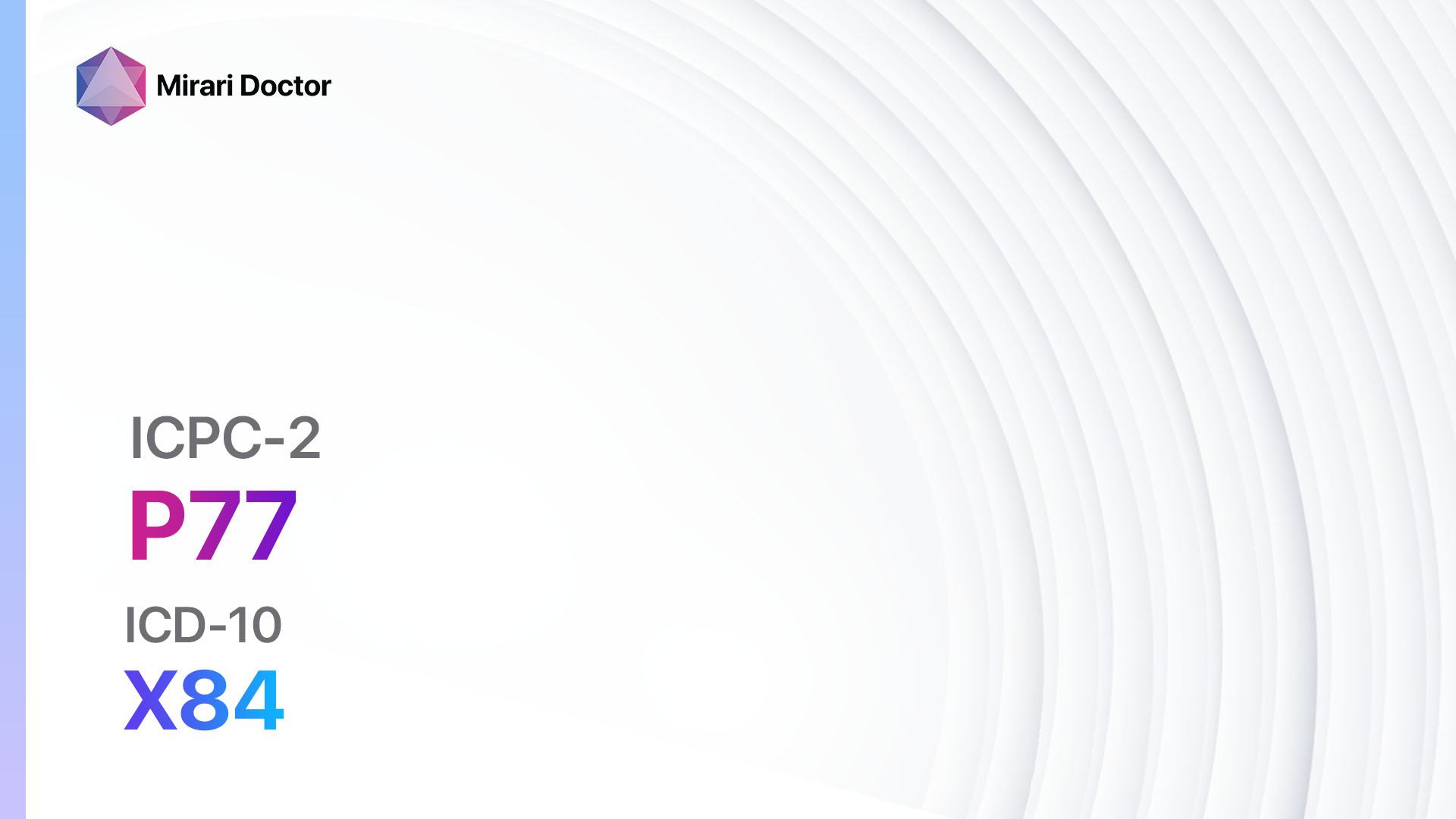
Introduction
Suicide and suicide attempts are serious mental health concerns that require immediate attention and intervention. This guide aims to provide healthcare professionals with a comprehensive approach to diagnosing and managing patients who present with suicidal ideation or have attempted suicide.
Codes
- ICPC-2 Code: P77 Suicide/suicide attempt
- ICD-10 Code: X84 Intentional self-harm by unspecified means
Symptoms
- Suicidal ideation: Thoughts of self-harm or ending one’s life.[1]
- Expressing feelings of hopelessness or worthlessness.[2]
- Social withdrawal and isolation.[3]
- Giving away personal belongings.[4]
- Sudden changes in mood or behavior.[5]
- Increased substance abuse.[6]
- Reckless behavior or engaging in dangerous activities.[7]
- Expressing feelings of being a burden to others.[8]
- Preoccupation with death or dying.[9]
Causes
- Mental health disorders, such as depression, bipolar disorder, or schizophrenia.[10]
- Substance abuse or addiction.
- Previous suicide attempts.
- Family history of suicide or mental health disorders.
- Chronic pain or illness.
- History of trauma or abuse.
- Social isolation or lack of support.
- Access to lethal means.
Diagnostic Steps
Medical History
- Conduct a thorough medical history to gather information about the patient’s mental health, previous suicide attempts, family history, and any underlying medical conditions.
- Assess for risk factors, such as recent loss or trauma, substance abuse, or social isolation.
- Inquire about the patient’s current mental state, including their thoughts, feelings, and behaviors.
Physical Examination
- Perform a comprehensive physical examination to assess for any physical injuries or signs of self-harm.
- Look for signs of substance abuse or intoxication.
- Evaluate vital signs, including blood pressure, heart rate, and respiratory rate.
Laboratory Tests
- Complete blood count (CBC) to assess for any underlying medical conditions or infections.
- Comprehensive metabolic panel (CMP) to evaluate organ function and detect any abnormalities.
- Thyroid function tests to rule out thyroid disorders, which can contribute to mood disturbances.
- Urine toxicology screen to identify any substance abuse or intoxication.
Diagnostic Imaging
- Imaging studies, such as a computed tomography (CT) scan or magnetic resonance imaging (MRI), may be necessary to evaluate for any physical injuries or underlying medical conditions.
Other Tests
- Psychological assessments, such as the Beck Depression Inventory (BDI) or the Suicide Ideation Questionnaire (SIQ), can help assess the severity of suicidal ideation and risk.
- Consultation with a mental health professional, such as a psychiatrist or psychologist, may be necessary for a comprehensive evaluation and diagnosis.
Follow-up and Patient Education
- Schedule regular follow-up appointments to monitor the patient’s progress and response to treatment.
- Provide education on coping strategies, stress management techniques, and the importance of seeking help during times of crisis.
- Encourage the patient to engage in a support system, such as therapy or support groups.
Possible Interventions
Traditional Interventions
Medications:
Top 5 drugs for Suicide/Suicide Attempt:
- Selective Serotonin Reuptake Inhibitors (SSRIs) (e.g., Fluoxetine, Sertraline, Escitalopram):
- Cost: Generic versions can be $4-$50/month.
- Contraindications: Hypersensitivity to SSRIs, concurrent use of monoamine oxidase inhibitors (MAOIs).
- Side effects: Nausea, headache, insomnia.
- Severe side effects: Serotonin syndrome, suicidal thoughts in some individuals.
- Drug interactions: MAOIs, other serotonergic medications.
- Warning: Close monitoring for worsening depression or emergence of suicidal thoughts.
- Atypical Antipsychotics (e.g., Olanzapine, Quetiapine, Aripiprazole):
- Cost: Generic versions can be $10-$200/month.
- Contraindications: Hypersensitivity to atypical antipsychotics, history of neuroleptic malignant syndrome.
- Side effects: Weight gain, sedation, metabolic changes.
- Severe side effects: Extrapyramidal symptoms, tardive dyskinesia.
- Drug interactions: Other antipsychotics, medications that prolong the QT interval.
- Warning: Increased risk of mortality in elderly patients with dementia-related psychosis.
- Benzodiazepines (e.g., Lorazepam, Diazepam, Alprazolam):
- Cost: Generic versions can be $4-$50/month.
- Contraindications: Hypersensitivity to benzodiazepines, acute narrow-angle glaucoma.
- Side effects: Sedation, dizziness, impaired coordination.
- Severe side effects: Respiratory depression, paradoxical reactions.
- Drug interactions: Other central nervous system depressants, opioids.
- Warning: Risk of dependence and withdrawal symptoms with long-term use.
- Mood Stabilizers (e.g., Lithium, Valproate, Lamotrigine):
- Cost: Generic versions can be $4-$50/month.
- Contraindications: Hypersensitivity to mood stabilizers, severe renal or hepatic impairment.
- Side effects: GI upset, tremor, weight gain.
- Severe side effects: Lithium toxicity, Stevens-Johnson syndrome.
- Drug interactions: Other medications that affect renal or hepatic function.
- Warning: Regular monitoring of serum lithium levels and renal function required.
- Monoamine Oxidase Inhibitors (MAOIs) (e.g., Phenelzine, Tranylcypromine):
- Cost: Generic versions can be $10-$100/month.
- Contraindications: Hypersensitivity to MAOIs, concurrent use of SSRIs or other serotonergic medications.
- Side effects: Orthostatic hypotension, weight gain, sexual dysfunction.
- Severe side effects: Hypertensive crisis, serotonin syndrome.
- Drug interactions: SSRIs, sympathomimetic medications.
- Warning: Dietary restrictions (tyramine-containing foods) and close monitoring of blood pressure required.
Alternative Drugs:
- Electroconvulsive Therapy (ECT): A procedure in which electric currents are passed through the brain to induce a controlled seizure. Cost: $2,500-$5,000 per session.
- Transcranial Magnetic Stimulation (TMS): Non-invasive procedure that uses magnetic fields to stimulate nerve cells in the brain. Cost: $300-$500 per session.
- Ketamine Infusion Therapy: Administration of ketamine, a dissociative anesthetic, in a controlled medical setting. Cost: $400-$800 per infusion.
- Psychotherapy: Various forms of therapy, such as cognitive-behavioral therapy (CBT) or dialectical behavior therapy (DBT), can be effective in treating suicidal ideation. Cost: Varies depending on the therapist and location.
- Hospitalization: In severe cases, hospitalization in a psychiatric facility may be necessary to ensure the safety and well-being of the patient. Cost: $1,000-$2,000 per day.
Surgical Procedures:
- No surgical procedures are indicated for the treatment of suicide or suicide attempts. However, in cases of self-harm or injuries resulting from a suicide attempt, surgical interventions may be necessary to address physical injuries.
Alternative Interventions
- Crisis Hotlines: Provide access to trained professionals who can offer immediate support and assistance. Cost: Free.
- Support Groups: Peer-led groups that provide a safe space for individuals to share their experiences and receive support. Cost: Varies depending on the organization or location.
- Mindfulness and Meditation: Practices that promote relaxation, stress reduction, and self-awareness. Cost: Free to minimal cost for guided meditation apps or classes.
- Exercise and Physical Activity: Regular physical activity has been shown to improve mood and reduce symptoms of depression. Cost: Varies depending on the chosen activity or gym membership.
- Safety Planning: Collaborative process between the patient and healthcare provider to develop a personalized plan to manage suicidal thoughts and prevent future attempts. Cost: Covered by healthcare provider.
Lifestyle Interventions
- Healthy Diet: Encourage a balanced diet rich in fruits, vegetables, whole grains, and lean proteins. Cost: Varies depending on food choices and dietary preferences.
- Adequate Sleep: Promote good sleep hygiene and establish a regular sleep schedule. Cost: Free.
- Stress Management: Teach stress reduction techniques, such as deep breathing exercises, yoga, or journaling. Cost: Free to minimal cost for yoga classes or journaling materials.
- Social Support: Encourage the patient to engage in social activities and maintain connections with friends and family. Cost: Varies depending on the chosen activities.
- Substance Abuse Treatment: If substance abuse is a contributing factor, refer the patient to a substance abuse counselor or treatment program. Cost: Varies depending on the chosen treatment program.
It is important to note that the cost ranges provided are approximate and may vary depending on the location and availability of the interventions.
Mirari Cold Plasma Alternative Intervention
Understanding Mirari Cold Plasma
- Safe and Non-Invasive Treatment: Mirari Cold Plasma is a safe and non-invasive treatment option for various skin conditions. It does not require incisions, minimizing the risk of scarring, bleeding, or tissue damage.
- Efficient Extraction of Foreign Bodies: Mirari Cold Plasma facilitates the removal of foreign bodies from the skin by degrading and dissociating organic matter, allowing easier access and extraction.
- Pain Reduction and Comfort: Mirari Cold Plasma has a local analgesic effect, providing pain relief during the treatment, making it more comfortable for the patient.
- Reduced Risk of Infection: Mirari Cold Plasma has antimicrobial properties, effectively killing bacteria and reducing the risk of infection.
- Accelerated Healing and Minimal Scarring: Mirari Cold Plasma stimulates wound healing and tissue regeneration, reducing healing time and minimizing the formation of scars.
Mirari Cold Plasma Prescription
Video instructions for using Mirari Cold Plasma Device – P77 Suicide/suicide attempt (ICD-10:X84)
| Mild | Moderate | Severe |
| Mode setting: 2 (Wound Healing) Location: 7 (Neuro system & ENT) Morning: 15 minutes, Evening: 15 minutes |
Mode setting: 2 (Wound Healing) Location: 7 (Neuro system & ENT) Morning: 30 minutes, Lunch: 30 minutes, Evening: 30 minutes |
Mode setting: 2 (Wound Healing) Location: 7 (Neuro system & ENT) Morning: 30 minutes, Lunch: 30 minutes, Evening: 30 minutes |
| Mode setting: 7 (Immunotherapy) Location: 1 (Sacrum) Morning: 15 minutes, Evening: 15 minutes |
Mode setting: 7 (Immunotherapy) Location: 1 (Sacrum) Morning: 30 minutes, Lunch: 30 minutes, Evening: 30 minutes |
Mode setting: 7 (Immunotherapy) Location: 1 (Sacrum) Morning: 30 minutes, Lunch: 30 minutes, Evening: 30 minutes |
| Total Morning: 30 minutes approx. $5 USD, Evening: 30 minutes approx. $5 USD |
Total Morning: 60 minutes approx. $10 USD, Lunch: 60 minutes approx. $10 USD, Evening: 60 minutes approx. $10 USD, |
Total Morning: 60 minutes approx. $10 USD, Lunch: 60 minutes approx. $10 USD, Evening: 60 minutes approx. $10 USD, |
| Usual treatment for 7-60 days approx. $70 USD – $600 USD | Usual treatment for 6-8 weeks approx. $1,260 USD – $1,680 USD |
Usual treatment for 3-6 months approx. $2,700 USD – $5,400 USD
|
 |
|
Use the Mirari Cold Plasma device to treat Suicide/suicide attempt effectively.
WARNING: MIRARI COLD PLASMA IS DESIGNED FOR THE HUMAN BODY WITHOUT ANY ARTIFICIAL OR THIRD PARTY PRODUCTS. USE OF OTHER PRODUCTS IN COMBINATION WITH MIRARI COLD PLASMA MAY CAUSE UNPREDICTABLE EFFECTS, HARM OR INJURY. PLEASE CONSULT A MEDICAL PROFESSIONAL BEFORE COMBINING ANY OTHER PRODUCTS WITH USE OF MIRARI.
Step 1: Cleanse the Skin
- Start by cleaning the affected area of the skin with a gentle cleanser or mild soap and water. Gently pat the area dry with a clean towel.
Step 2: Prepare the Mirari Cold Plasma device
- Ensure that the Mirari Cold Plasma device is fully charged or has fresh batteries as per the manufacturer’s instructions. Make sure the device is clean and in good working condition.
- Switch on the Mirari device using the power button or by following the specific instructions provided with the device.
- Some Mirari devices may have adjustable settings for intensity or treatment duration. Follow the manufacturer’s instructions to select the appropriate settings based on your needs and the recommended guidelines.
Step 3: Apply the Device
- Place the Mirari device in direct contact with the affected area of the skin. Gently glide or hold the device over the skin surface, ensuring even coverage of the area experiencing.
- Slowly move the Mirari device in a circular motion or follow a specific pattern as indicated in the user manual. This helps ensure thorough treatment coverage.
Step 4: Monitor and Assess:
- Keep track of your progress and evaluate the effectiveness of the Mirari device in managing your Suicide/suicide attempt. If you have any concerns or notice any adverse reactions, consult with your health care professional.
Note
This guide is for informational purposes only and should not replace the advice of a medical professional. Always consult with your healthcare provider or a qualified medical professional for personal advice, diagnosis, or treatment. Do not solely rely on the information presented here for decisions about your health. Use of this information is at your own risk. The authors of this guide, nor any associated entities or platforms, are not responsible for any potential adverse effects or outcomes based on the content.
Mirari Cold Plasma System Disclaimer
- Purpose: The Mirari Cold Plasma System is a Class 2 medical device designed for use by trained healthcare professionals. It is registered for use in Thailand and Vietnam. It is not intended for use outside of these locations.
- Informational Use: The content and information provided with the device are for educational and informational purposes only. They are not a substitute for professional medical advice or care.
- Variable Outcomes: While the device is approved for specific uses, individual outcomes can differ. We do not assert or guarantee specific medical outcomes.
- Consultation: Prior to utilizing the device or making decisions based on its content, it is essential to consult with a Certified Mirari Tele-Therapist and your medical healthcare provider regarding specific protocols.
- Liability: By using this device, users are acknowledging and accepting all potential risks. Neither the manufacturer nor the distributor will be held accountable for any adverse reactions, injuries, or damages stemming from its use.
- Geographical Availability: This device has received approval for designated purposes by the Thai and Vietnam FDA. As of now, outside of Thailand and Vietnam, the Mirari Cold Plasma System is not available for purchase or use.
References
- American Psychiatric Association. (2013). Diagnostic and statistical manual of mental disorders (5th ed.). https://doi.org/10.1176/appi.books.9780890425596
- Beck, A. T., Kovacs, M., & Weissman, A. (1979). Assessment of suicidal intention: The Scale for Suicide Ideation. Journal of Consulting and Clinical Psychology, 47(2), 343-352. https://doi.org/10.1037/0022-006X.47.2.343
- Rudd, M. D., Berman, A. L., Joiner, T. E., Jr., Nock, M. K., Silverman, M. M., Mandrusiak, M., Van Orden, K., & Witte, T. (2006). Warning signs for suicide: Theory, research, and clinical applications. Suicide and Life-Threatening Behavior, 36(3), 255-262. https://doi.org/10.1521/suli.2006.36.3.255
- Shneidman, E. S. (1985). Definition of suicide. John Wiley & Sons.
- Hawton, K., Casañas i Comabella, C., Haw, C., & Saunders, K. (2013). Risk factors for suicide in individuals with depression: A systematic review. Journal of Affective Disorders, 147(1-3), 17-28. https://doi.org/10.1016/j.jad.2013.01.004
- Conner, K. R., Beautrais, A. L., & Conwell, Y. (2003). Risk factors for suicide and medically serious suicide attempts among alcoholics: Analyses of Canterbury Suicide Project data. Journal of Studies on Alcohol, 64(4), 551-554. https://doi.org/10.15288/jsa.2003.64.551
- Brent, D. A., & Mann, J. J. (2005). Family genetic studies, suicide, and suicidal behavior. American Journal of Medical Genetics Part C: Seminars in Medical Genetics, 133C(1), 13-24. https://doi.org/10.1002/ajmg.c.30042
- Van Orden, K. A., Witte, T. K., Cukrowicz, K. C., Braithwaite, S. R., Selby, E. A., & Joiner, T. E., Jr. (2010). The interpersonal theory of suicide. Psychological Review, 117(2), 575-600. https://doi.org/10.1037/a0018697
- Nock, M. K., Borges, G., Bromet, E. J., Cha, C. B., Kessler, R. C., & Lee, S. (2008). Suicide and suicidal behavior. Epidemiologic Reviews, 30(1), 133-154. https://doi.org/10.1093/epirev/mxn002
- Cavanagh, J. T., Carson, A. J., Sharpe, M., & Lawrie, S. M. (2003). Psychological autopsy studies of suicide: A systematic review. Psychological Medicine, 33(3), 395-405. https://doi.org/10.1017/s0033291702006943
Related articles
Made in USA


